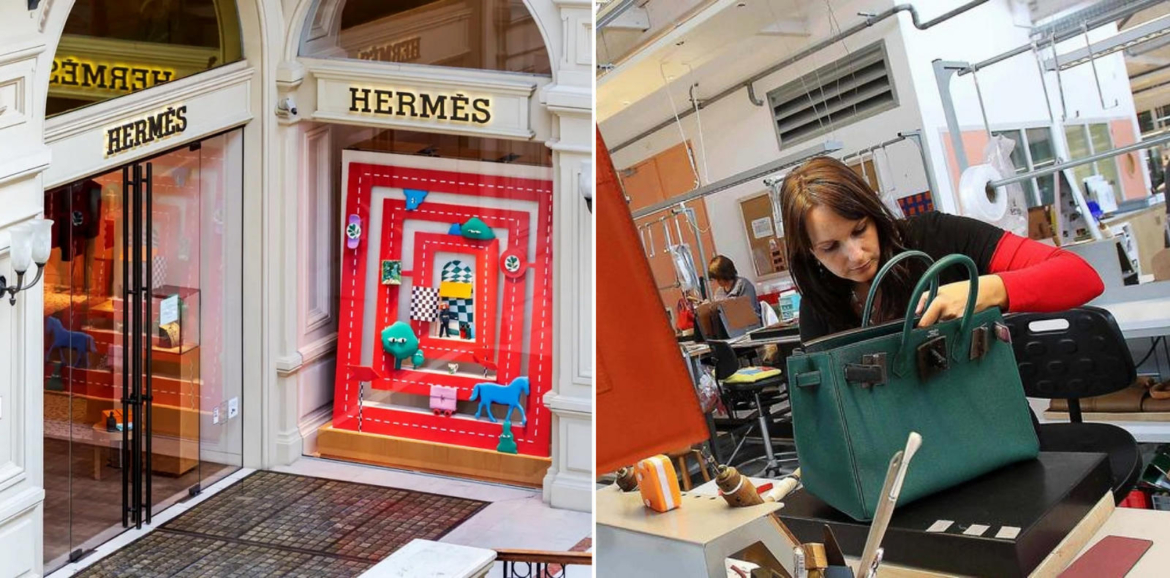Hermès is as Hermès does. The maison, founded in 1837 by Thierry Hermès in Paris as a harness workshop, has grown into the world’s most valuable luxury brand. With precision and quality as its foundation, the brand has stayed true to its ethos, anchored at 24 Rue du Faubourg Saint-Honoré, Paris, which still serves as the iconic Hermès headquarters. Over the years, Hermès has given the world timeless icons like the Sac à dépêches, which later became the Kelly bag after Grace Kelly famously carried it, the Birkin bag in 1984 named after actress Jane Birkin, and the eternally chic carré scarf. Yet, what has remained unchanged is Hermès refusing to bend to the world’s demands.

Despite surging demand and competitors like LVMH and Gucci going big and bold, Hermès chose a measured, almost restrictive path. The 188-year-old label has unapologetically stuck to heritage, craftsmanship, and exclusivity, resisting overexposure. Recently, as political shifts in parts of the world brought new tariffs from the United States, the luxury goods market has been forced to adapt. In typical Hermès fashion, the brand has done what it always does best, remained grounded. Instead of rushing to adapt by changing its roots, Hermès has announced a bold but quiet move. It will open four new workshops in France over the next four years. Of course, production costs will rise, but Hermès knows its clientele well. They are more than ready, cash in hand, to embrace the brand’s holy grail status. Let’s take a closer look at the Hermès way forward.

Hermès is synonymous with both success and sustained demand, but mass production has never been on its radar. The opening of four new workshops in France will ensure a steady supply while allowing the brand to pass on the cost of new U.S. tariffs to American buyers.

Rather than relocating operations to the United States to dodge tariffs, Hermès is doubling down on its commitment to “Made in France.” The new workshops will be located in Colombelles, Isle d’Espagnac, Loupes, and Charleville-Mézières. These facilities will employ 260 specialized artisans, with over 1,000 new jobs expected to be created in the coming years.

The price of luxury just went up, for America alone
If Hermès had its way, its loyal fans across every continent would likely be willing to pay 10 to 20 percent more for its creations. Fortunately, most of them won’t have to. The price increase will apply only in the United States, where it is meant to offset the newly imposed tariffs. “The price increase will be implemented only for the U.S., to offset the tariffs that apply only to the U.S. market,” said Eric du Halgouët, Hermès’ executive vice president of finance, in a statement to CNBC.

Hermès is the world’s most valuable luxury company
Outpacing LVMH, a conglomerate with 75 luxury brands under its belt, is no small feat. Yet Hermès has managed to do just that, single-handedly. According to CNBC, the company reported revenues of approximately $4.42 billion (€4.129 billion), reflecting an 8.5% year-on-year increase. Its leather goods sales rose by 10% over the same period. Hermès currently commands a market capitalization of approximately $276.3 billion, surpassing all others in the luxury space.
Still, Hermès isn’t chasing growth for the sake of growth. While the world clamors for its products, the brand remains firm in its principles. “We’re trying to increase production at a rapid pace, but we’re sticking to the artisanal model, which we believe is synonymous with quality. We’re not going to start looking for productivity increases,” said Guillaume de Seynes, executive vice president of Hermès’ manufacturing and capital investment division, in an interview with WWD.

